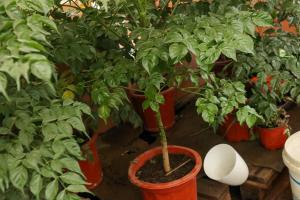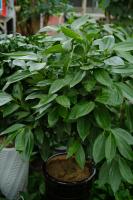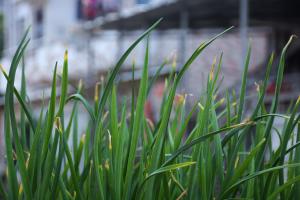Introduction
Tomatoes are one of the most popular plants grown in gardens worldwide. However, when you start to see white spots on your tomato plant leaves, it can be quite concerning. There are many reasons why your tomato plant leaves may have white spots, and it can be due to a variety of factors. In this article, we will explore some of the most common causes of white spots on tomato plant leaves.
Fungal Diseases
One of the most common reasons why tomato plant leaves develop white spots is due to fungal diseases. Fungal diseases are caused by different types of fungi and can be identified by the presence of white or yellow spots on the leaves. Fungal diseases such as powdery mildew, white mold, and septoria leaf spot are common problems that tomato growers face. These diseases can spread quickly, infecting not only the leaves but also the fruit of the tomato plant. To prevent fungal diseases, it is important to practice good gardening hygiene, such as removing infected leaves as soon as possible.
Insect Infestations
Another common cause of white spots on tomato plant leaves is insect infestations. Insects such as spider mites and aphids love to feed on tomato plant leaves, causing damage to the leaves and leaving behind white or yellow spots. These insects are difficult to spot, and by the time you see the white spots on the leaves, the infestation may already be severe. To prevent insect infestations, it is important to keep your garden clean and tidy, remove any debris or plant matter that can harbor insects, and inspect your plants regularly for signs of an infestation.
Nutrient Deficiencies
Tomato plants require specific nutrients to thrive, and if they are not getting the nutrients they need, it can lead to white spots on the leaves. Nutrient deficiencies such as nitrogen, magnesium, and calcium can cause white spotting on tomato plant leaves. Nitrogen deficiency causes yellowing of leaves, while magnesium deficiency causes brown spots to appear around the leaf margins. Calcium deficiency causes white spots to appear on the leaves, which can sometimes lead to blossom end rot on the tomatoes. To prevent nutrient deficiencies, make sure you are fertilizing your tomato plants with the correct nutrients at the right time.
Environmental Factors
Environmental factors can also cause white spots on tomato plant leaves. High humidity levels can encourage the growth of fungal diseases, while excessively sunny or hot conditions can cause sunscald, which leads to white spots on the leaves. Additionally, overwatering or underwatering your tomato plants can also cause white spots on the leaves. To prevent these problems, make sure you are providing the right amount of water and ensure that your tomato plants have adequate shade during extremely hot conditions.
Conclusion
There are many reasons why your tomato plant leaves may have white spots, such as fungal diseases, insect infestations, nutrient deficiencies, and environmental factors. By identifying the cause of the white spots, you can take the necessary steps to prevent the problem from spreading and harming the health of your tomato plants. Remember to practice good gardening hygiene, inspect your plants regularly, and fertilize your tomato plants with the correct nutrients to help prevent white spots on the leaves.

 how many times do yo...
how many times do yo... how many planted tre...
how many planted tre... how many pine trees ...
how many pine trees ... how many pecan trees...
how many pecan trees... how many plants comp...
how many plants comp... how many plants can ...
how many plants can ... how many plants and ...
how many plants and ... how many pepper plan...
how many pepper plan...































